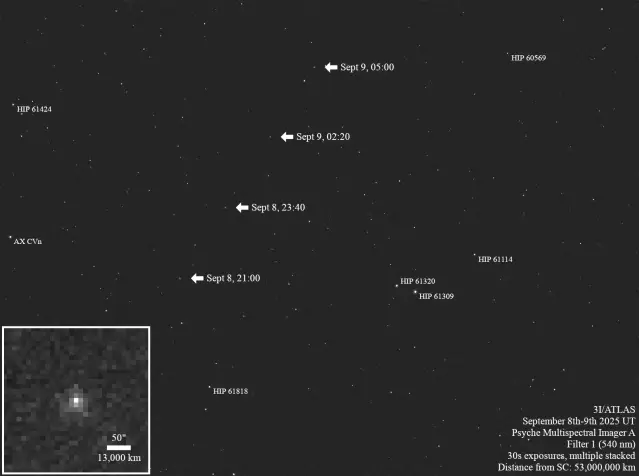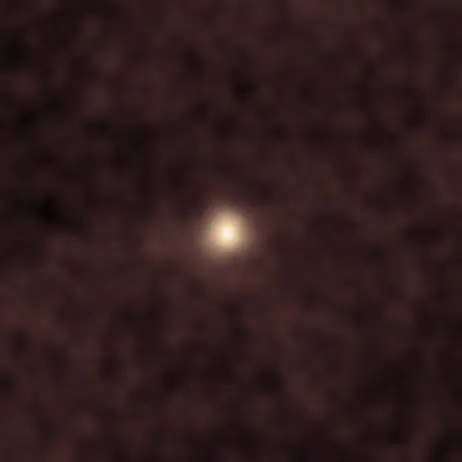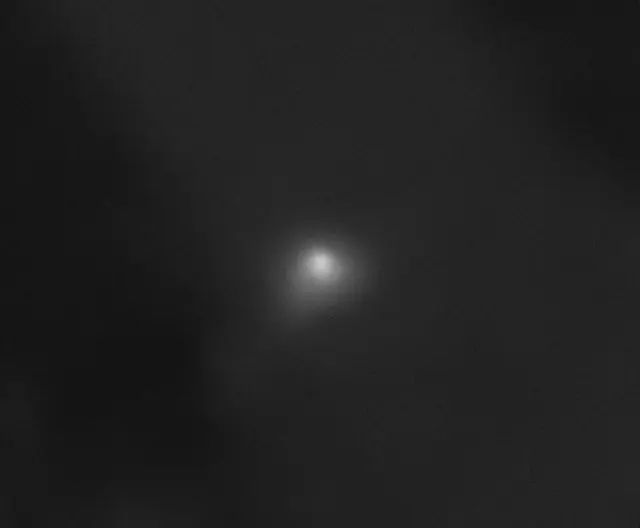-
Jonathan Bailey Fans Under Fire Over Comments About His Sexuality - 11 mins ago
-
‘My Baby Girl Has Passed to Glory,’ Says Father of Guard Soldier Killed in D.C. Shooting - 13 mins ago
-
Mets Acquire Ex-White Sox, Yankees Pitcher After 3-Year MLB Hiatus - 46 mins ago
-
A Hong Kong Fire Survivor’s Escape, in His Own Words - 57 mins ago
-
Aldi recall: Customers told discard Christmas products ‘immediately’ - about 1 hour ago
-
Officials Had Been Warned for Over a Year Before Hong Kong Fire - 2 hours ago
-
Neighbors Spend Months Trying To Save Stray Dog, Get ‘Thanksgiving Miracle’ - 2 hours ago
-
Andriy Yermak, Zelensky’s Chief of Staff, Resigns - 2 hours ago
-
All In With Ashley: NFL Rankings Thanksgiving Special - 3 hours ago
-
Shelter Dogs Receive Special Thanksgiving Gift, Their Response Is Adorable - 3 hours ago
Comet 3I/ATLAS: NASA Releases New Images of Interstellar Visitor %%page%% %%sep%% %%sitename%%
NASA has shared new images of comet 3I/ATLAS, the interstellar visitor that’s due to be visible from Earth again soon before leaving our solar system.
The comet was first discovered by the NASA-funded ATLAS survey telescope in Rio Hurtado, Chile and reported to the Minor Planet Center on July 1, 2025.
It made its closest approach to the sun on Wednesday October 29. It was its behavior at this point, Harvard astrophysicist professor Avi Loeb said, that would help determine whether it is a normal comet or an extraterrestrial ship, as he speculated.
However, emerging evidence seems to suggest the comet is just as it appears to be. However, a recent set of observations, taken from the vicinity of Mars, may help future planetary defense efforts, scientists said earlier this week.


The comet is named 3I/ATLAS because it is the third (3) interstellar (I) object found passing through our solar system, and was discovered by the ATLAS survey telescope.
In releasing the new images, NASA emphasized that while the comet poses no threat to Earth and will get no closer than 170 million miles of us next month, the comet did fly within 19 million miles of Mars backin early October.
Various NASA missions are working together to track and study this “rare, interstellar comet” as it passes through our solar system.
In a live stream, Tom Statler, lead scientist for solar system small bodies, discussed images from NASA’s asteroid-studing Psyche mission on September 8 and 9 when the comet was about 33 million miles (53 million kilometers) from the spacecraft.
The data is helping astronomers refine the trajectory of 3I/ATLAS and learn more about the faint coma, or cloud of gas, surrounding its nucleus, according to NASA.


Statler also discussed how the asteroid-analyzing Lucy spacecraft observing the comet from the opposite direction on September 16.
Another image, taken by the Mars-orbiting MAVEN spacecraft on September 28, shows not a direct picture of the comet but a spectrum, including hydrogen gases, which can help determine its chemical composition.
ESA/NASA’s SOHO mission also imaged the comet from October 15–16 after it has passed Mars, Statler noted.
The High Resolution Imaging Science Experiment (HiRISE) camera aboard NASA’s Mars Reconnaissance Orbiter also captured 3I/ATLAS on October 2. At the time it was imaged, the comet was about 0.2 astronomical units (19 million miles, or 30 million kilometers) from the spacecraft.
Do you have a tip on a science story that Newsweek should be covering? Do you have a question about comet 3I/ATLAS? Let us know via science@newsweek.com.
Source link


















